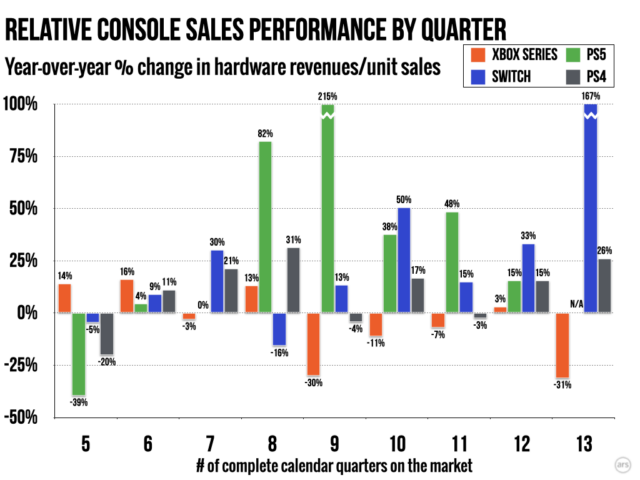
Enlarge / Scale is important, especially when talking about relative console sales. (credit: Aurich Lawson | Getty Images)
Yesterday, Microsoft announced that it made 31 percent less off Xbox hardware in the first quarter of 2024 (ending in March) than it had the year before, a decrease it says was "driven by lower volume of consoles sold." And that's not because the console sold particularly well a year ago, either; Xbox hardware revenue for the first calendar quarter of 2023 was already down 30 percent from the previous year.
Those two data points speak to a console that is struggling to substantially increase its player base during a period that should, historically, be its strongest sales period. But getting wider context on those numbers is a bit difficult because of how Microsoft reports its Xbox sales numbers (i.e., only in terms of quarterly changes in total console hardware revenue). Comparing those annual shifts to the unit sales numbers that Nintendo and Sony report every quarter is not exactly simple.
Context clues

Significant declines in Xbox hardware revenue for four of the last five quarters stand out relative to competitors' unit sales. (credit: Kyle Orland)
To attempt some direct contextual comparison, we took unit sales numbers for some recent successful Sony and Nintendo consoles and converted them to Microsoft-style year-over-year percentage changes (aligned with the launch date for each console). For this analysis, we skipped over each console's launch quarter, which contains less than three months of total sales (and often includes a lot of pent-up early adopter demand). We also skipped the first four quarters of a console's life cycle, which don't have a year-over-year comparison point from 12 months prior.
Read 7 remaining paragraphs | Comments
Ars Technica - All contentContinue reading/original-link]




